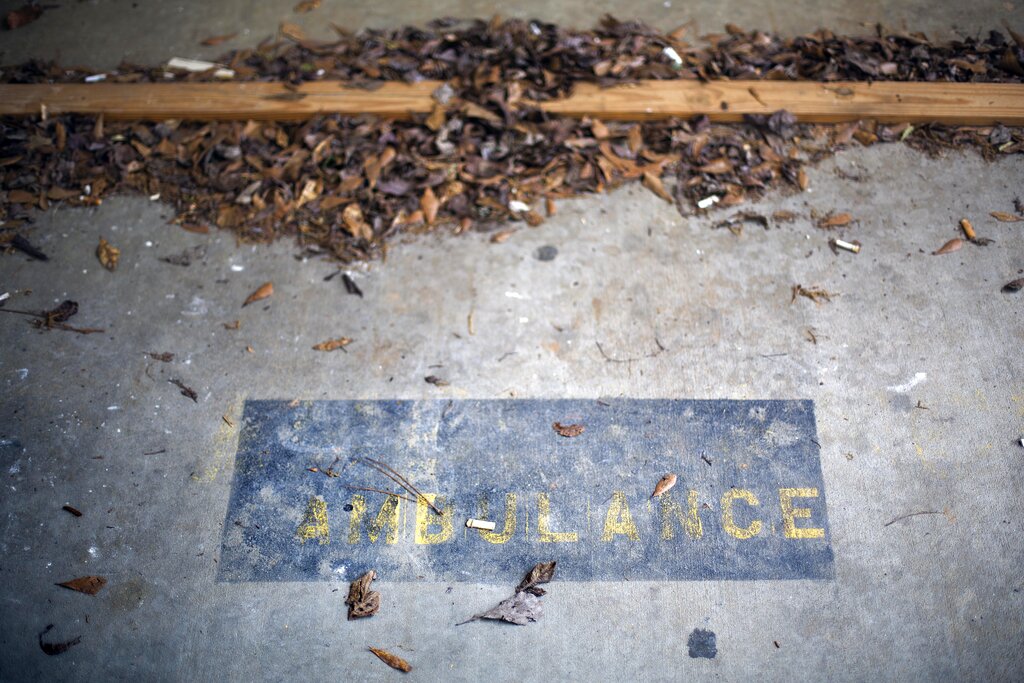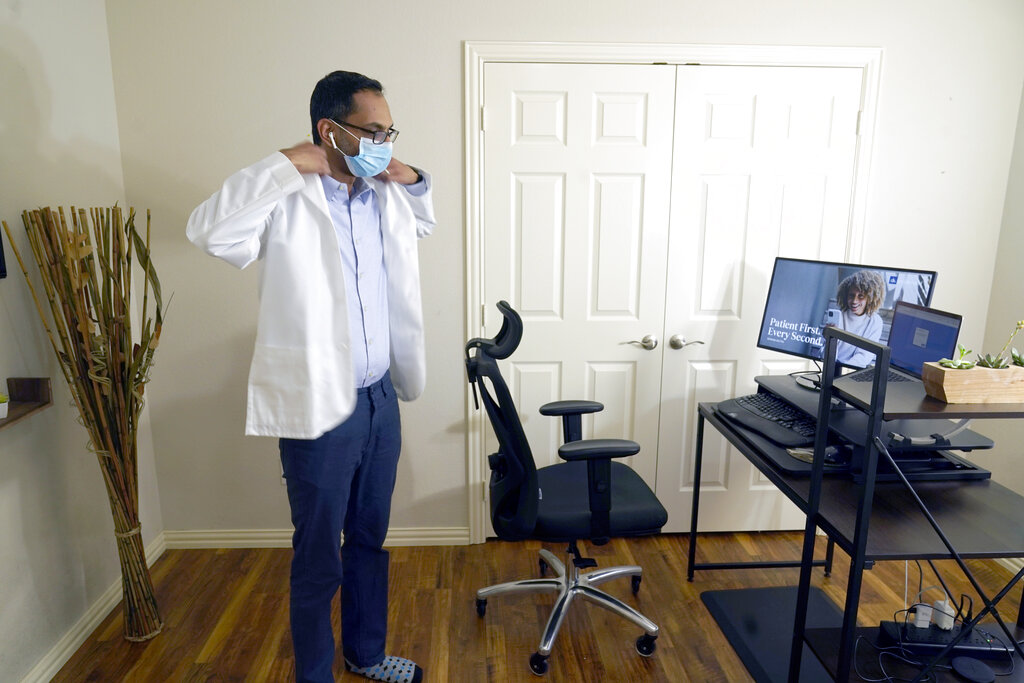Millions of people in America are receiving healthcare that rivals Third World standards. Vast regions of the country have seen medical services evaporate over the past decade. Hospitals have closed, doctors have left, and pharmacies have been forced into bankruptcy. In this series, Dried Up: America’s Medical Deserts, the Washington Examiner will investigate what happened to these now-barren terrains. Without adequate access to a hospital, a primary care center, an OB-GYN, or other specialized medical services, the health of an estimated 30 million people is put in jeopardy.
Help may be on the horizon for more than 41 million people stranded in medical deserts across the country, where access to doctors, hospitals, and pharmacies has all but disappeared over the past two decades.
That’s welcome news to Jennifer Whitehall in Arizona, Leslie Lincoln in North Carolina, and Nicolas Motley in West Virginia. They, like so many others in the United States, have watched helplessly as their communities have turned into medical wastelands and their standard of healthcare teeters between inadequate and abysmal.
“There’s nothing around here for miles,” Whitehall told the Washington Examiner in July. “If there’s an emergency, we start praying because it’s an hour and change to the nearest hospital. Jesus will get here a lot faster than a doctor.”
‘MEDICAL DESERTS’ STRAND MILLIONS WITHOUT ACCESS TO LIFE-SAVING HEALTHCARE
Medical deserts form when opportunities, investments, and incentives dry up. The result is crippling for communities and ends in hospitals closing, doctors leaving, and pharmacies shutting their doors. Without adequate access to healthcare, underserved populations are at risk of failing to receive timely diagnoses, treatment, and medicine, which can put lives in jeopardy.
Residents in these “deserts” have seen firsthand how vital it is to have medical care nearby and what happens when it’s not.
Motley’s father, an 87-year-old veteran, started experiencing signs of a stroke one night during dinner. When Motley saw his father’s face start to sag, he knew he had only a precious few minutes to get his father to an emergency room. He drove for an hour, and by the time he reached the facility, it was too late.
Similar scenarios have played out across underserved areas for years.

These places are medical deserts, a geographical area whose population has inadequate access to medical care. It covers many dimensions, including access to primary healthcare providers, maternity wards, emergency services, trauma centers, mental health facilities, nursing homes, community health centers, and pharmacies.
Proposed solutions to medical deserts include tax credits for struggling hospitals, free-standing emergency centers, the expansion of telehealth, as well as increased incentives to recruit and retain doctors.
But to do all of that, states must first be willing to invest in their rural communities, Michael Meit, co-director of the Center for Rural Health Research at East Tennessee State University, told the Washington Examiner.
“The way we pay for medical services in the United States undersupports rural communities,” he said. “The payment mechanisms aren’t there to incentivize providers and facilities to be in rural areas.”
MEDICAL DESERTS: WHAT THEY ARE, WHERE THEY ARE, AND WHO THEY AFFECT
He added, “We have a lot of trouble recruiting providers to rural communities. Once somebody gets their medical degree or their advanced degree for whatever medical profession they are in, they want to raise a family, they want to settle down, and going to an impoverished community that is a medical desert is a hard sell. If you don’t have the providers, you can’t support the systems.”
In Arizona, state Rep. Walt Blackman (R) told the Washington Examiner that he not only supports loan forgiveness as a recruitment tool for new doctors but has also pushed legislation that would erase student loans for existing medical providers working in rural areas.
“The problem was we weren’t applying it to doctors who were already out,” he said. “Some of these doctors that were already out were practicing in these desolate communities, and they have to move because they can’t afford to pay their student loans. I extended it to existing doctors in these rural areas. If they stay for six years, we pay off their student loans. There is no breakup of care, and it’s a way to fix the problem in rural Arizona.”
Blackman added that “basic infrastructure” is also needed, which includes access to broadband and cellular service.

When an underserved community is able to secure such service, its residents can benefit from telehealth or telemedicine, which allows doctors to provide healthcare at lower costs and frees patients from traveling long distances to receive it.
Telehealth can also improve monitoring, timeliness, and communication within the healthcare system. Its usage soared during COVID-19, when patients and providers had to decrease in-person visits, but has remained popular in areas that can access it.
DEATH OF RURAL PHARMACIES ACROSS THE US LEAVE MILLIONS WITHOUT A PLACE TO GET MEDICINE
“Investing in healthcare infrastructure and providing the means to access said infrastructure can have a multiplier effect on eliminating healthcare deserts and improving health outcomes,” a comprehensive 2021 GoodRx study on medical deserts found. “Helping the uninsured get insured and afford healthcare can attract investment in hospitals, which can then attract more healthcare providers. Likewise, increasing access to low-cost health centers reduces the financial burden of healthcare and encourages preventive care, building a healthier community, and alleviating the demand for hospital beds and healthcare providers. There are many dimensions to healthcare access, and thus many opportunities to improve.”
Many communities have been turning to free-standing emergency rooms, which provide 24-hour service and treat everything from the common cold to cardiac arrest. These solo centers are typically not attached to a hospital and can quickly help patients who need immediate care. If the person requires more specialized care, they are then sent to a traditional hospital that provides those services.
One such free-standing emergency room is slated to open in Chattooga County, Georgia, in 2023. The facility, the first of its kind in the state, will be located on 27 acres and have six exam rooms, two observation rooms, lab services, diagnostic machines, and a staff of 44.
The county had its own hospital years ago, but it shut down. The nearest one now is about a 45-minute drive away, County Commissioner Blake Elsberry, told the Chattanooga Times Free Press.
“Rural healthcare is a big issue in the state, all the way across the state,” he said.
Elsberry believes Chattooga County can be a blueprint for other small communities that need to stabilize patients and offer emergency services. He told the media outlet he expects to see more healthcare providers as well as commercial and residential investments near the new facility.
CLICK HERE TO READ MORE FROM THE WASHINGTON EXAMINER
For Motley, it’s bittersweet.
“I wish my dad had those options,” he said.

